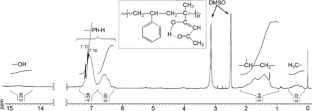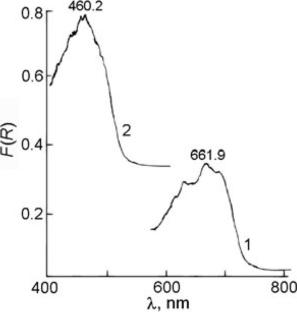固定在聚苯乙烯基质上的 5-甲基-5-己烯-2,4-二酮金属钴(II)聚合物作为甲基丙烯酸甲酯自由基聚合的引发剂
IF 0.9
4区 化学
Q4 CHEMISTRY, MULTIDISCIPLINARY
引用次数: 0
摘要
苯乙烯和 5-甲基-5-己烯-2,4-二酮的共聚物在二甲基甲酰胺中与氯化钴络合时,会形成两种类型的金属聚合物,即分子内和分子外结合的 β-二酮基团,其比例取决于初始大分子配体的浓度。研究证实,聚合物金属配合物在配位单元的几何形状、分子量和金属含量方面存在差异,因此在引发甲基丙烯酸甲酯的接枝自由基聚合反应时具有不同的反应活性。本文章由计算机程序翻译,如有差异,请以英文原文为准。


Cobalt(II) Metallopolymers with 5-methyl-5-hexene-2,4-dione Immobilized on a Polystyrene Matrix as Initiators of Radical Polymerization of Metyl Methacrylate
Complexation of a copolymer of styrene and 5-methyl-5-hexene-2,4-dione with cobalt chloride in dimethylformamide occurs with the formation of metallopolymers of two types, namely with intra- and extramolecular binding of β-diketone groups, the ratio of which depends on the concentration of the initial macromolecular ligand. It has been established that the polymer metal complexes differ in the geometry of the coordination unit, molecular weights, and metal content resulting in the different reactivity to initiation of graft radical polymerization of methyl methacrylate.
求助全文
通过发布文献求助,成功后即可免费获取论文全文。
去求助
来源期刊

Theoretical and Experimental Chemistry
CHEMISTRY, MULTIDISCIPLINARY-
CiteScore
1.60
自引率
10.00%
发文量
30
审稿时长
6-12 weeks
期刊介绍:
Theoretical and Experimental Chemistry is a journal for the rapid publication of research communications and reviews on modern problems of physical chemistry such as:
a) physicochemical bases, principles, and methods for creation of novel processes, compounds, and materials;
b) physicochemical principles of chemical process control, influence of external physical forces on chemical reactions;
c) physical nanochemistry, nanostructures and nanomaterials, functional nanomaterials, size-dependent properties of materials.
 求助内容:
求助内容: 应助结果提醒方式:
应助结果提醒方式:


